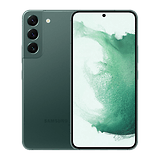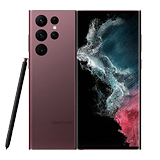
[ad_1]
In the upper echelon of the most popular smartphone manufacturers, both Xiaomi and Samsung sit pretty right at the top. While Samsung has been king-of-the-hill with its range of Galaxy smartphones for over a decade now, Xiaomi still remains a fairly young company. Nevertheless, the Chinese electronics giant has managed to grab a huge market share in the west in recent years.
Both manufacturers rely on Android and cover a wide price range. For this reason, we will divide this article into the three price categories of the flagship smartphone, mid-range, and entry-level models. In addition, we will also tell you how big the respective ecosystem is and how Samsung and Xiaomi have adopted Android in their respective skins.
Jump to:
- Smartphone catalogs compared
- Software & Privacy
- Wearables and other hardware
- Value, stability & sustainability
- Conclusion
Xiaomi vs. Samsung: Smartphone catalogs compared
Flagship
Let’s begin with a bang by looking at the models that determine the image of the brands in 2022: the flagships. Here, both Xiaomi and Samsung do showcase new technologies on offer at mouthwatering prices. Here are the 2022 models in comparison.
Xiaomi vs Samsung: Flagships
Even though the Xiaomi 12 series has not yet been officially released outside of China, we still want to list them in this overview. While there are no available pricing details at the moment, we will have to make do with Chinese prices. Samsung unveiled the new Galaxy S22 series on February 9, 2022, and we already know how much these smartphones will cost when they arrive.
In February 2022, there are three models that represent both series. For Xiaomi, it’s the Xiaomi 12, Xiaomi 12 X and Xiaomi 12 Pro variants, while for Samsung, it’s the Galaxy S22, Galaxy S22+, and Galaxy S22 Ultra. As you know from last year, the variants cannot really be compared as Xiaomi might launch a 12 Ultra, which will then be the direct rival to the Galaxy S22 Ultra.
Since you can take a look at the exact differences in the table, we will focus on the most obvious similarities and differences. Both smartphone series offer the latest technologies like AMOLED displays with a 120 Hertz refresh rate, multiple cameras at high resolutions, and current wireless standards like 5G, Bluetooth 5.2, and WiFi 6, plus the latest Android 12 operating system with several years of updates.
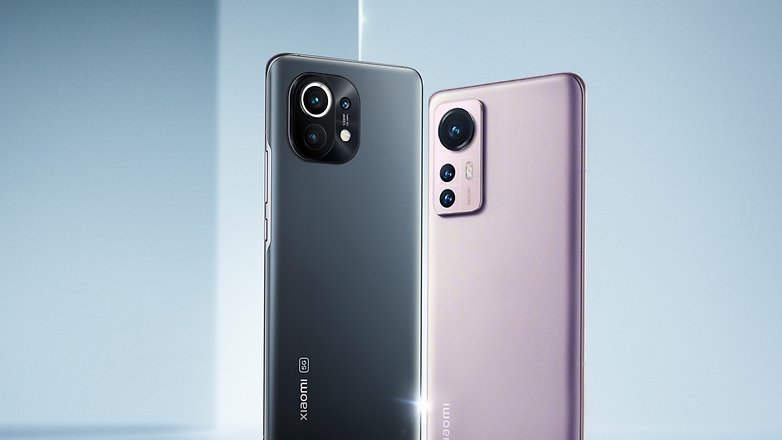
However, there are still some differences to take note of. For example, Xiaomi is ahead in terms of quick charging and battery performance. In return, you will finally see optical telephoto lenses used across all 2022 Galaxy models, whereas you will have to reach for the Xiaomi 12 Pro to enjoy that. Samsung has also managed to extend the update warranty once again in 2022. While Xiaomi only offers three years of major Android updates and four years of security updates, Samsung pips it ahead with four major Android updates and five years of security updates.
As you can see: Xiaomi and Samsung hardly have anything to separate between themselves in the flagship market. While there are minor differences between the lineups, both manufacturers do represent the latest technologies in the smartphone world with their models. Unfortunately, we still have to wait for the prices of the Xiaomi lineup, and will adjust this article accordingly then.
Mid-range
If you still look at only the most expensive models when it comes to smartphones, you are missing out on a whole lot. This is because the mid-range market continues to be the most exciting one since 2021 until now. Both Xiaomi and Samsung have launched extremely popular mid-range devices over the past two years, where nearly all of them offer a very good price-performance ratio.
| Samsung: Mid-range | Xiaomi Redmi: Mid-range | ||||||||
|---|---|---|---|---|---|---|---|---|---|
| Product |
Xiaomi Redmi Note 11S |
||||||||
| Image |  |
 |
 |
 |
 |
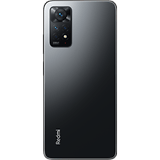 |
 |
||
| Specifications | 6.5 inch, LCD 1600×720 pixels MediaTek MT6853 Dimensity 64 / 128 GB ROM 4 / 6 / 8 GB RAM Quad camera Main camera: 48 MP Ultra wide-angle: 8 MP Macro camera: 5 MP Depth camera: 2 MP 5,000 mAh January 2021 |
6.5 inch, Super AMOLED 2400×1080 pixels Snapdragon 720G 128 / 256 GB ROM 4 / 6 / 8 GB RAM Quad camera Main camera: 64 MP Ultra wide-angle: 12 MP Macro camera: 5 MP Depth camera: 5 MP 4,500 mAh March 2021 |
6.5 inch, Super AMOLED 2400×1080 pixels Snapdragon 750G 128 / 256 GB ROM 6 / 8 GB RAM Quad camera Main camera: 64 MP Ultra wide-angle: 12 MP Macro camera: 5 MP Depth camera: 5 MP 4,500 mAh March 2021 |
6.5 inch, Super AMOLED 2400×1080 pixels Snapdragon 778 5G 128 / 256 GB ROM 6 / 8 GB RAM Quad camera Main camera: 64 MP Ultra wide-angle: 12 MP Macro camera: 5 MP Depth camera: 5 MP 4,500 mAh August 2021 |
6.7 inch, Super AMOLED 2400×1080 pixels Snapdragon 720G 128 / 256 GB ROM 6 / 8 GB RAM Quad camera Main camera: 64 MP Ultra wide-angle: 12 MP Telephoto camera: 8 MP Macro camera: 5 MP 5,000 mAh March 2021 |
6.43 inch, AMOLED 2400×1080 pixels Qualcomm Snapdragon 680 64 / 128 GB ROM 4 / 6 GB RAM Quad camera Main camera: 50 MP Ultra wide-angle: 8 MP Macro camera: 2 MP Depth camera: 2 MP 5,000 mAh January 2022 |
6.43 inch, AMOLED 2400×1080 pixels MediaTek Helio G96 64 / 128 GB ROM 4 / 6 GB RAM Quad camera Main camera: 108 MP Ultra wide-angle: 8 MP Macro camera: 2 MP Depth camera: 2 MP 5,000 mAh January 2022 |
6.67 inch, AMOLED 2400×1080 pixels MediaTek Helio G96 64 / 128 GB ROM 6 / 8 GB RAM Triple camera Main camera: 108 MP Ultra wide-angle: 8 MP Macro camera: 2 MP 5,000 mAh January 2022 |
6.67 inch, AMOLED 2400×1080 pixels Qualcomm Snapdragon 695 64 / 128 GB ROM 6 / 8 GB RAM Triple camera Main camera: 108 MP Ultra wide-angle: 8 MP Macro camera: 2 MP 5,000 mAh January 2022 |
| Pros |
|
|
|
||||||
| Cons |
|
|
|
||||||
| Rating | Read review |
|
Read review |
|
Read review |
|
|
|
|
| Offers* | |||||||||
After comparing the hardware specifications, I have to say this again: Xiaomi already presented its new mid-range devices for 2022, while Samsung will only unveil the new mid-range Galaxy A53, A33, and A73 models in a few months’ time. Thus, the comparison is not quite fair, even though it shows the pros and cons that the two manufacturers offer in the respective price ranges.
Xiaomi is considered the manufacturer with the best price-performance ratio in the smartphone world, and that is to be taken quite literally in this case. The recently introduced “Redmi Note 11” series offers displays with AMOLED and high refresh rates of up to 120 Hertz, Quick Charging at a maximum of 67 watts, and powerful cameras that capture up to 108 megapixels with prices from around $179.
However, Xiaomi’s software update policy is less convincing, and the pre-installed MIUI operating system does contain plenty of bloatware and even ads that require you to deactivate in a rather awkward manner. Also, their availability in the US is almost zero, with only independently imported models available in marketplaces.

Here, Samsung clearly positions itself as a brand for premium mid-range smartphones. This is because the Galaxy A52, A52s, A52 5G, A72 and A32 models introduced in 2021 impress with one of the longest software update guarantees in the Android market. But these handsets do not shy away in terms of performance, either. You get particularly high-quality AMOLED displays, triple camera configurations with optical image stabilization, and even a dedicated telephoto camera in the case of the Galaxy A72, and sufficiently fast processors for the mid-range. However, Samsung cannot hold a candle to Xiaomi when it comes to short charging times for their smartphones.
Entry-level
If smartphones are mainly supposed to be inexpensive, you can see an exciting development in this department in the last few years. For a long time now, Xiaomi was the first port of call for smartphones that cost less than $200. Samsung has reacted to this and even launched entry-level smartphones like the Samsung Galaxy A12. Basically, the same pros and cons apply as in the mid-range segment.
| Samsung: Entry-level smartphones | Xiaomi: Entry-level smartphones | |||||
|---|---|---|---|---|---|---|
| Product |
Xiaomi Redmi Note 9C |
|||||
| Image |  |
 |
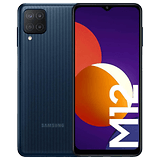 |
 |
 |
 |
| Specifications | 6.5 inch LCD 1600×720 pixels MediaTek MT6765 Helio P35 32 / 64 GB ROM 2 / 3 / 4 GB RAM Triple camera Main camera: 13 MP Macro camera: 2 MP Depth camera: 2 MP 5,000 mAh August 2021 |
6.5 inch LCD 1600×720 pixels MediaTek MT6765 Helio P35 32 / 64 / 128 GB ROM 2 / 3 / 4 / 6 GB RAM Quad camera Main camera: 48 MP Ultra wide-angle: 5 MP Macro camera: 2 MP Depth camera: 2 MP ,5000 mAh December 2020 |
6.5 inch LCD 1600×720 pixels Samsung Exynos 850 32 / 64 / 128 GB ROM 3 / 4 GB RAM Quad camera Main camera: 48 MP Ultra wide-angle: 5 MP Macro camera: 2 MP Depth camera: 2 MP 5,000 mAh April 2021 |
6.53 inch, LCD 1600×720 pixels MediaTek MT6765G Helio G35 32 / 64 / 128 GB ROM 2 / 3 / 4 GB RAM Triple camera Main camera: 13 MP Macro camera: 2 MP Depth camera: 2 MP 5,000 mAh June 2020 |
6.53 inch, LCD 2340×1080 pixels MediaTek MT6853 Dimensity 800U 64 / 128 GB ROM 4 / 6 GB RAM Triple camera Main camera: 48 MP Macro camera: 2 MP Depth camera: 2 MP 5,000 mAh January 2021 |
6.43 inch, AMOLED 2400×1080 pixels MediaTek Helio G95 64 / 128 GB ROM 4 / 6 / 8 GB RAM Quad camera Main camera: 64 MP Ultra wide-angle: 8 MP Macro camera: 2 MP Depth camera: 2 MP 5,000 mAh March 2021 |
| Pros |
|
|||||
| Cons |
|
|||||
| Rating |
|
|
|
|
Read review |
|
| Offers* | ||||||
This means that Xiaomi normally offers a bit more performance and features for the same amount of money. Samsung, however, convinces with solid hardware, normally really good build quality, and its own Android skin, OneUI. However, we have to point out a special caveat for Xiaomi in this entry-level category.
Xiaomi also sells smartphones that have a particularly good price-performance ratio under the Poco brand. The manufacturer’s plan here is to offer the best possible hardware at the lowest possible price. For a market overview, take a look at our list of the best smartphones you can buy today for under $200.
Foldables
In the last two years, a whole new smartphone category has opened up: foldable phones with touchscreens that simply fold in half. Although Xiaomi and Samsung introduced their first foldables pretty promptly, Samsung is clearly ahead of everyone else here. From 2021 until now, Samsung’s foldable smartphones continue to be the clear buying recommendation for unique handsets.
| Z Fold 3 in tablet form factor | Z Flip 3 in a foldable phone form factor | |
|---|---|---|
| Product | ||
| MSRP | from $1,799 | from $999 |
| Image |  |
 |
| Specifications | 7.6 inch, Dynamic AMOLED 2208×1768 pixels 6.2 inch, Super AMOLED 2268×832 pixels Qualcomm Snapdragon 888 256 / 512 GB ROM 12 GB RAM Triple camera Main camera: 12 MP Ultra wide-angle: 12 MP Telephoto camera: 12 MP 4,400 mAh August 2021 |
6.67 inch, Dynamic AMOLED 2640×1080 pixels 1.9 inch, AMOLED 260×512 pixels Qualcomm Snapdragon 888 128 / 256 GB ROM 8 GB RAM Dual camera Main camera: 12 MP Ultra wide-angle: 12 MP 3,300 mAh August 2021 |
| Pros |
|
|
| Cons |
|
|
| Rating | Read review | Read review |
| Offers* |
However, you still have to reckon with a crease in the display and high prices. While the Samsung Galaxy Z Fold 3 offers a format that transforms a conventional smartphone into a tablet when opened, the Galaxy Z Flip 3 plays up the nostalgia factor of using a classic flip phone. Thus, you turn half a cell phone into a handset in standard smartphone format.

Xiaomi introduced the Mi Mix Fold in 2021. The foldable follows a similar concept as the Samsung Galaxy Z Fold 3, but it has not been officially released outside of China. Since we do not recommend importing the smartphone, we will not go into more detail about the device. For more information, just follow the link to our review page of the Xiaomi Mi Mix Fold.
Software and privacy
You have already read a bit about it in the earlier paragraphs concerning both smartphone offerings: Samsung is better positioned than Xiaomi in terms of software updates. To provide you with a better idea of this, we will take a closer look at both operating systems once again.
Samsung’s OneUI
As the name suggests, Samsung’s OneUI is used on all Android devices from the manufacturer. The Samsung-optimized Android interface is considered a thing of beauty among skins and offers numerous additional features like extended multitasking features, support for Samsung’s S Pen stylus, and native support for Samsung services like Samsung’s S Cloud.
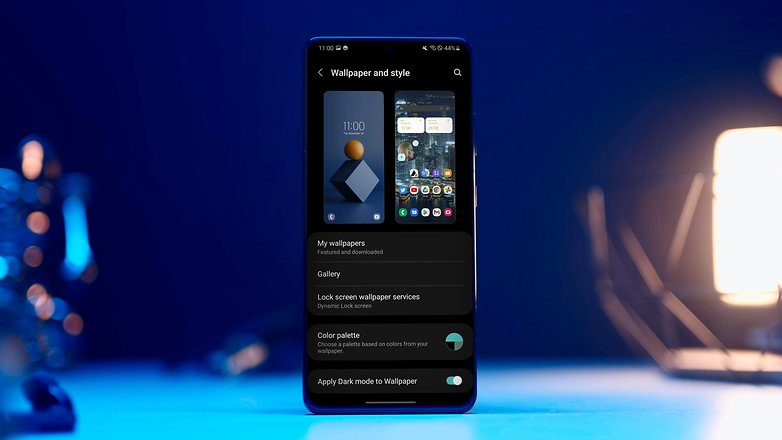
In our review of Samsung’s latest One UI 4.0 skin, you can read about the myriad of options Samsung has implemented with the corresponding update to Android 12. Apart from the features, you can also look forward to the fact that Samsung’s own services are not preloaded with a lot of bloatware and that software updates are usually provided for longer. Note that the manufacturer only extended the update warranty for selected (high-end) models to four Android versions and five years of security updates at the beginning of 2022.
However, not everything is perfect in Samsung’s software either. The huge size of Samsung’s operating systems tends to stand out in reviews. Thus, you have to live with having up to 15% of the available storage space used up even before you set up your Samsung smartphone. Samsung also works more and more on implementing its own hardware and software ecosystem. For instance, you can only use the multi-pairing feature of the Samsung Galaxy Buds Pro with other Samsung devices.
Xiaomi MIUI
The MIUI operating system skin emerged from a former custom ROM that worked on rooted Android phones. Xiaomi has taken over the operating system and has developed it a lot more since then. Compared to Samsung’s OneUI, MIUI looks a bit cooler and offers even more customization options. Once again, you can best check out the features of the latest MIUI operating system in the linked review.
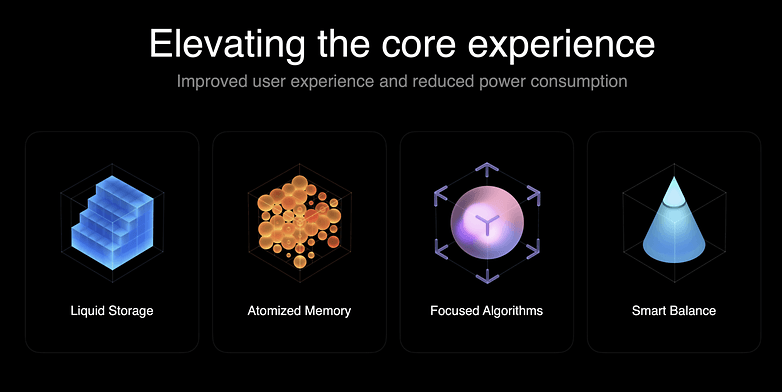
We have to directly address the elephant in the room concerning MIUI: Not only is the latest version MIUI 13 only available on very few smartphones, but the operating system also continues to be based on Android 11. This means you will have to make do without the new features that Google introduced in Android 12. Furthermore, Xiaomi repeatedly attracts negative attention with numerous ads and bloatware on its smartphones.
For many people, Xiaomi’s operating system is also questionable because it is not entirely transparent with how the collected data is handled. As a Chinese company, Xiaomi has to strongly comply with the country’s data protection regulations. Thus, if you want to be sure that your data is not passed on to the Chinese Communist Party, you might want to look for another manufacturer. This is a political issue, but we do not want to enter this territory.
Wearables and other devices
Both Xiaomi and Samsung do not only see themselves as smartphone manufacturers rivals. This is because, with the purchase of a new smartphone, you also gain a doorway into an ecosystem of other devices. Both manufacturers offer smartwatches, fitness trackers, tablets, TVs, in-ear Bluetooth headphones, and even washing machines or smart toilet seats. However, we only review wearables and tablets from these product categories.
Wearables and other devices
In the table above, you can find current reviews of these devices from Xiaomi and Samsung. However, we only want to highlight this segment to you in order to illustrate the ecosystems from both manufacturers. Overall, Xiaomi and Samsung do not give each other much elbow room in this respect. If you feel comfortable with devices from a certain manufacturer, you can sit back and continue shopping with both Samsung and Xiaomi.
Price stability and sustainability
Xiaomi is a prime example of a manufacturer that produces so-called “fast phones”. In other words, smartphones that are inexpensive to buy and reach the end of their life cycle after around two years. The manufacturer offers quick-charging technologies that shorten the battery lifespan and an update guarantee that corresponds to a similar time frame. Only the most expensive Xiaomi smartphones offer a longer update guarantee with three years of security updates.
The story is slightly different when it comes to Samsung. As mentioned earlier, numerous Samsung smartphones will now receive long-term support updates. The new devices from the S22 series, for example, can be used until 2027. The workmanship on these handsets is good enough that the devices should be able to last until then with a little bit of extra care and caution. However, even Samsung is not immune to the fast phone culture with its entry-level smartphones. The rule of thumb here is: The more expensive a Samsung smartphone is, the longer you can theoretically use it.
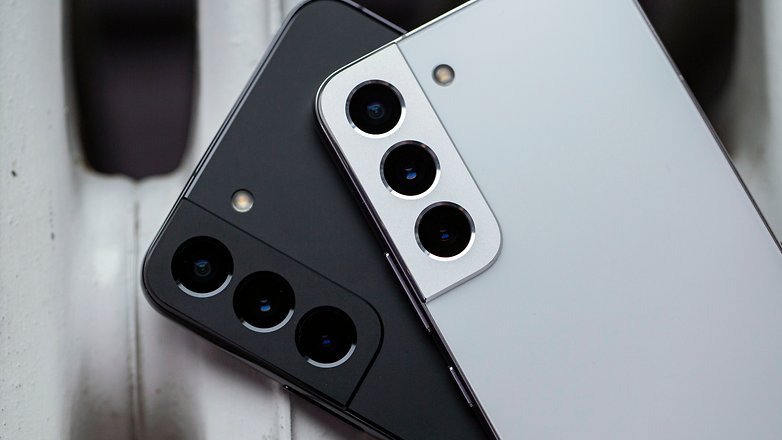
However, neither brand is a particularly sustainable smartphone manufacturer. Samsung omits the chargers in many of its more expensive smartphones and relies on plastic parts made from recycled fishing nets in the S22 series. Xiaomi did plan something similar with the Mi 11 but ultimately decided against leaving the charger out of the packaging for the western market.
However, avoiding electronic waste by omitting the charger is not a prime example of sustainability at Samsung either. Small steps in the right direction should therefore not be a reason to buy Samsung in any case. If sustainability is important to you, you should go for models like the Shiftphone or Fairphone 4, which can be repaired and upgraded due to their modular form factor.
Conclusion
Xiaomi or Samsung – which smartphone manufacturer offers more in the end? This question is probably harder to answer for any other pair of brands than for the competitors from China and South Korea. After all, both manufacturers do offer models for beginners all the way to the high-end market or niche markets such as foldables.
However, Samsung still positions itself more toward being a manufacturer of premium smartphones in 2022, which is justified with models like the Galaxy S22 Ultra and the latest foldables. Xiaomi still carries the reputation of being a highly recommended entry-level smartphone manufacturer with fantastic mid-range offerings, as these are the strengths of the company by stretching your hard-earned dollar.
Samsung’s big ace up its sleeve, however, is OneUI, and it also offers a particularly long update warranty. Thus, Samsung can further strengthen its image as a premium brand for this year. Xiaomi continues to try to narrow this gap and we will find out how well that works in a few months’ time. This is because Xiaomi still has to unveil its devices from the Xiaomi 12 series outside of China, and that would be a good opportunity for the company to impress the masses with premium quality builds and a longer update warranty.
We will probably find out how well that pans out in March! Let us revisit this article again next month at the latest!
[ad_2]

